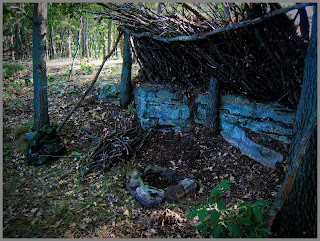The lesson plan for BushclassUSA is to complete 13 requirements and 5 electives out 7 possible, (your choice) before you can continue to complete the course by doing 5 "outings", one of which must be an overnight. I have personally been doing these kinds of things in bushcraft for a very long time, so I guess my outings to practice the required student lessons have been more or less unsanctioned. Oh well, it is hard to keep a good bushcrafter down. I just have to be out there in the wilderness.
Since the "Student Practice For Four Basic Knots" was my last one "required" before my "outings", I decided to have some fun with it. I hope you enjoy the video.
My hats off to "Red Green" and all our pals in "Canoodia" as they say, for their fine comedic sense and I hope that this gives you some ideas about learning some basic knots and will help you in your pursuit of the BushclassUSA Basic Certification. Knots are a lot of fun to learn, and will stay with you for a very long time. They are needed in bushcraft, so please learn them. As always, Happy Exploring.



















